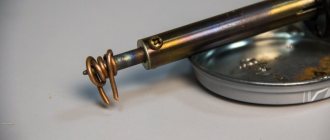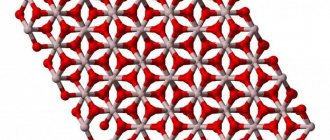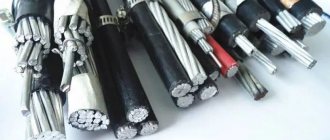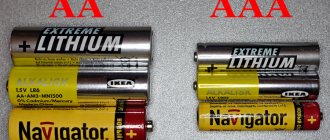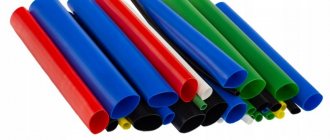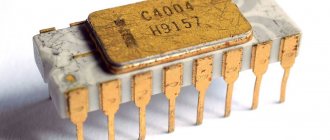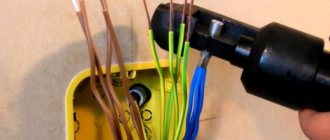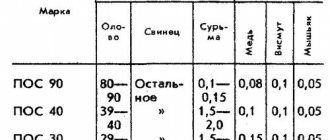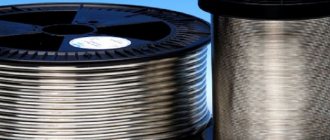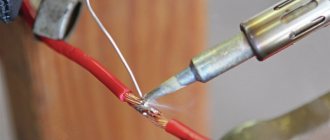Soldering aluminum, as many experts rightly believe, is a rather difficult technological process to perform. Meanwhile, this opinion can be considered correct only in relation to those situations when they try to solder aluminum products using solders and fluxes that are used to join parts made of other metals: copper, steel, etc.
If you use a special flux for soldering aluminum, as well as the appropriate solder, then this technological process does not present any particular difficulties.
Features and principles of the process
The technological process of soldering is complicated by the low temperature value of the material melting . Parts will very quickly lose strength when heated, and the design will reduce stability when the temperature reaches 300 degrees. If you use low-melting solders, which consist of cadmium, bismuth, indium, tin, then they will be very difficult to come into contact with aluminum, and good strength will not be provided.
Metals that combine zinc have very good solubility . In this case, the soldered materials will be highly reliable. Before starting soldering, the material should be cleaned of oxides and dirt. For this purpose mechanical action is used. You can use a brush or use special fluxes that have a strong composition. Before starting the procedure, it is necessary to tin the areas that will be treated. If the coating is tin, the part will be protected from the formation of oxides.
To reliably solder aluminum products, you need to select the right heating tool. And the reliability of the connection also depends on the choice of alloy and flux for soldering aluminum.
Application of aluminum
The widespread use of aluminum products lies primarily in the fact that it is a light metal. Aluminum is widely used in electrical engineering because it has excellent electrical conductivity.
For household needs, pots, cans, colanders, and mugs are made from this metal. Pure aluminum is used to produce foil used for electrolytic capacitors. It can also be used in the production of radiators.
However, soldering this metal can cause a lot of problems. This is explained by the fact that upon slight interaction with air, the surface of aluminum is covered with a thin but hard oxide film. It protects aluminum from further oxidation, but during the soldering process it creates a difficult barrier to overcome.
There are several methods to solve this problem, for example, soldering with rosin, but the best results are obtained by using fluxes specially designed for this.
Soldering methods
Soldering of aluminum materials is carried out using an electric soldering iron, blowtorch or gas torch . There are several ways to solder aluminum:
- Using solder.
- With rosin.
- Using the electrochemical method.
With rosin
This option for soldering an aluminum surface must be used for small part sizes . The cleaned area must be coated with rosin and placed on sanding paper of medium grit. The wires are pressed on top with the tinned tip of a heated soldering iron. This action must be performed several times, after which the soldering procedure itself is performed. You can also use a rosin solution in diethyl ether.
In this option, the end of the soldering iron does not need to be removed from the embedded end, and you just need to add rosin on top. If you need to connect thin aluminum wires, then a soldering iron with a power of 50 W is suitable. If the thickness of the aluminum is approximately 1 mm, then the soldering iron must be selected at 100 W, and for parts thicker than 2 mm, preheating of the joint will be required.
Using solder
This method is very common and is often used in electrical engineering, car repair, and other products . Before starting the process, it is necessary to coat the material with an alloy, and then the tinned elements are connected. Parts that have been previously peeled are connected to each other and to other alloys and metals.
You can use light alloy solders that contain zinc, tin and cadmium. And also recently, refractory materials based on aluminum have been very actively used. Light alloy compounds are used because aluminum products can be soldered at temperatures up to 400 degrees. This will allow you not to spoil the properties of the material and maintain strength. Compositions with cadmium and tin will not allow for good contact, and they will also be susceptible to corrosion. Refractory materials do not have such disadvantages.
Electrochemical method
If you use the electrochemical method, then you will need a device for performing electroplating . This will result in copper plating of the surface. If there is no such device, then you will have to process the part yourself. To do this, you will need to sand the required surface and apply a few drops of copper sulfate. And only after that the negative pole of an independent power supply is connected to the product.
You can use a regular battery or accumulator, as well as any other electrical rectifier. A cleaned copper wire, which has a diameter of 1 mm and is located in an insulated stand, is connected to the positive terminal. When the electrolysis process occurs, copper begins to settle on the part, and only after that the area can be tinning and drying with a soldering iron. And after that you can easily solder the required tinned place.
Solders and fluxes for soldering
Most soldering methods are carried out using various solders, and only in cases where low-melting eutectics can form between metals during the soldering process is soldering possible without special solder. There are a number of general requirements for solders. Solder should spread well over the surface of the base metal, wet and dissolve it, easily fill the gaps between parts, provide the necessary strength of the connection, etc. Solders are used in the form of tapes, pastes, and rods. Particularly common are solders in the form of wire loops and foil spacers, stamped to match the surface of the parts being joined. High-temperature solders are widely used as solders - alloys based on silver, aluminum, copper, etc., which, as a rule, have a melting point above 450-500 C (723-773 K). Copper-zinc solders PMC 36, PMC 48, PMC 54 have a tensile strength σв = 21-35 kgf/mm2 (206.0-343.2 MN/m3), relative elongation up to 26%, recommended for soldering copper products, tombac , brass, bronze. Silver solders have a melting point of 740-830 C (413-1103 K). According to GOST 8190-56, solder grades are divided depending on the silver content in the alloys, which varies from 10 (PSr 10) to 72% (PSr 72). They also contain zinc, copper and a small amount of lead. These solders are used for soldering thin parts, connecting copper wires, and in cases where the solder location should not sharply reduce the electrical conductivity of the butt joints. Low-temperature solders have a melting point below 450-400 C (723-673 K). They have little strength. They are used for soldering almost all metals and alloys in their various combinations. In most cases, low temperature solders contain a significant percentage of tin. Low-temperature tin-lead solders (GOST 1499-70) have an upper critical melting point of 209-327 ° C (482-600 K). Tin has a melting point of 232 C (505 K). Its tensile strength is 1.9 kgf/mm2 (18.6 MN/m2), relative elongation 49%, HB 6.2 kgf/mm2 (60.8 MN/m2). Tin-lead solders POS-90, POS-61, POS-40, etc. are used for soldering copper devices, aircraft radiators, brass and iron products, copper wires, etc. The formation of a high-quality solder joint largely depends on the possibility the most complete removal of oxide, adsorbed gas and liquid films from the metal surface. In soldering practice, various types of fluxes, a reducing atmosphere or vacuum are used to remove surface films. Recently, mechanical destruction of films using ultrasonic elastic vibrations has been successfully used for this purpose. Soldering fluxes have several purposes. They protect the base metal and solders from oxidation, dissolve or reduce formed oxides, improve surface wetting, and promote the spreading of solders. Fluxes can be used in solid, liquid and gaseous form (in the form of powders, pastes, gas solutions). The role of flux is performed by some special gas atmospheres and vacuum, which can also help restore oxides and improve wetting conditions. In some cases, the fluxing effect is exerted by individual components included in the solder. For example, phosphorous solders do not require fluxes when soldering copper alloys.
Solders, fluxes, materials
Tin can be used for soldering aluminum , but only in cases where there is a highly active flux, and the areas have been thoroughly cleaned. Tin compounds must be additionally coated with special compounds, since they exhibit poor strength and poor corrosion protection.
Very good solder joints can be achieved by using silicon, zinc, aluminum or copper solder . Such materials are produced by both domestic and foreign manufacturers. Russian brands of solders are produced under the name TsOP40. According to GOST, they contain 60% tin and 40% zinc, and there is also 34A solder. It contains 66% aluminum, 6% silicon and 28% copper. The composition will give good strength to the contact area and provide reliable corrosion resistance. Foreign compounds include HTS-2000. This product is very convenient to use.
Such alloys can be used with large-sized parts, as well as with high heat dissipation, if you use a heating pad or objects made of aluminum alloys with high-temperature melting. If you have never soldered objects before, then it is advisable to watch special training videos that will help answer many questions.
In addition to solders, it is also necessary to use special fluxes , which contain zinc, fluorine, ammonium burate, as well as triethanolamine and other elements . Popular domestic fluxes include F64, which has good chemical activity. Usually this product is used even without first cleaning the parts from the oxide film. You can also use 34A, which contains lithium, zinc and potassium chloride, as well as sodium fluoride.
Selection of fluxes
Taking into account the specifics of soldering aluminum parts, the choice of fluxes must be approached carefully.
There are domestic products consisting of several components. They provide effective cleaning of parts and prevent oxidative processes when heated. This is especially true when using tin and lead solders, which are known to be susceptible to oxidation.
Good penetrating ability is provided by a multicomponent flux made from ammonium and zinc fluoroborates, triethanolamine, and additives. The product has an affordable price. Its effectiveness has been tested many times in practice.
A well-known high-temperature flux consists of potassium, lithium and zinc chlorides; sodium fluoride. The dry mixture is poured into the soldering work area on a stick, waiting for uniform melting and mixing with the solder mass.
Preparation of material
To achieve a good quality connection, you need to use not only the right technologies, but also be able to properly prepare the surface to be treated . All dirt and oxide films must be removed. Mechanical processing is carried out using sandpaper or a metal brush, and sometimes a stainless steel mesh and a grinding machine are used. You can also use different acid solutions.
The surface must be degreased using solvent, acetone or gasoline. When an aluminum surface is cleaned, an oxide film immediately forms. However, its thickness will be lower than the original one, and therefore the soldering process will be easier.
Tools
If you need to connect aluminum products at home, then it is advisable to use an electric soldering iron. This is a universal device that very conveniently allows you to solder wires, repair small tubes and other elements. The adaptation requires a minimum amount of space. There must also be electricity in the house. If you need to repair a large-sized device, then use a gas torch for soldering aluminum, which uses butane, argon and propane. To solder objects at home, a standard blowtorch is suitable.
If gas burners are used, then it is necessary to constantly monitor the flame, which represents a balanced supply of gases and oxygen. If the correct gas mixture is present, the flame will be bright blue. A dim hue will indicate that there is excess oxygen.
Surface preparation
Before you begin tinning, you must complete the following steps:
It should be taken into account that it will not be possible to completely remove the oxide film, since a new formation will immediately appear in the cleaned area. Therefore, stripping is carried out not with the goal of completely removing the film, but to reduce its thickness in order to simplify the task of the flux.
Heating the soldering area
To solder small parts, you can use a soldering iron with a power of at least 100W. Massive items will require a more powerful heating tool.
Soldering iron 300 Watt
The best option for heating is to use a gas burner or blowtorch.
Simple gas burner
When using a burner as a heating tool, the following nuances should be taken into account:
Aluminum soldering steps
Soldering aluminum objects is no different from joining other metal materials:
- First you need to clean and degrease the area of the future connection.
- Afterwards, all elements are installed in working position.
- Flux is applied to the required area and the product begins to be heated using a soldering iron or torch.
- When there is an increase in temperature, the solder bar melts; it must constantly touch the surface of the elements, thereby controlling the process.
It is necessary to remember that soldering should be done in a well-ventilated area , since during the heating process dangerous compounds are released.
If flux-free solder is used, then you need to know about some of the nuances of the work. To prevent the oxide film from interfering, you need to use the end of the rod to make scratching movements along the area of the element. Thus, the oxide integrity will be compromised and the solder will come into contact with the metal being processed.
The oxide layer can be destroyed in other ways. The area to be treated must be scratched with a wire brush or stainless steel rod.
To ensure maximum strength of the connection, it is necessary to treat the areas with tinning.
HTS-2000 – solder for soldering aluminum and its alloys
The American product is produced in the form of a rod and consists of nine alloys. HTS-2000 solder is a product of the latest advances, with which soldering can be carried out without flux. It easily penetrates through underlying impurities that competitors' formulations cannot penetrate.
When using the HTS-2000 product, no special skills are required, which means its high quality. When heated, the solder easily penetrates the aluminum oxide film formed on the surface and creates strong molecular bonds.
Due to the fact that the electrochemical potential between aluminum and solder is small, the material is not afraid of corrosion. The service life of products with such a connection is more than 10 years.
Application area of the HTS-2000 product:
- restoration of parts after chips, breakage, wear;
- repair of car crankcases;
- repair of aluminum boat bottoms;
- repair of air conditioner pipes, compressors, pumps;
- soldering of copper and aluminum elements in various combinations;
- repair of aluminum fuel tanks;
- restoration and repair of cylinder heads;
- radiator tube repair;
- restoration of threaded holes.
In addition, using this solder you can repair aluminum stairs, gutters, and boats. Quite often it is used when repairing diesel engines.
It is important to know that experts do not recommend using HTS-2000 solder for soldering aluminum with copper. As a result of this procedure, electrochemical corrosion occurs, which quickly destroys the metal.
The material is used with an oxy-acetylene or propane torch . It is the strongest, fastest and at the same time simplest solder for soldering among other similar alloys.
Safety precautions
Before you start working with a soldering iron, you should always first study the safety rules.
- You only need to work with the window open. Because you can get poisoned due to secretions during work.
- There should be nothing flammable around. If a soldering iron is dropped onto paper, for example, it can cause a fire.
- The device should be held exclusively by the special handle, since during operation it becomes very hot, which can lead to burns.
- Children should not be allowed near the soldering iron. The device should always be kept in a place that is difficult for the baby to reach.
- The device can only be lowered on a special stand during breaks between soldering. If the soldering iron is placed on a table, a fire may occur.
Follow these simple rules, and no problems will arise during operation.
To perform high-quality soldering of aluminum materials at home, it is necessary to fully comply with the technology. If you choose high-quality methods, solders, fluxes and materials, then the result will be positive.
